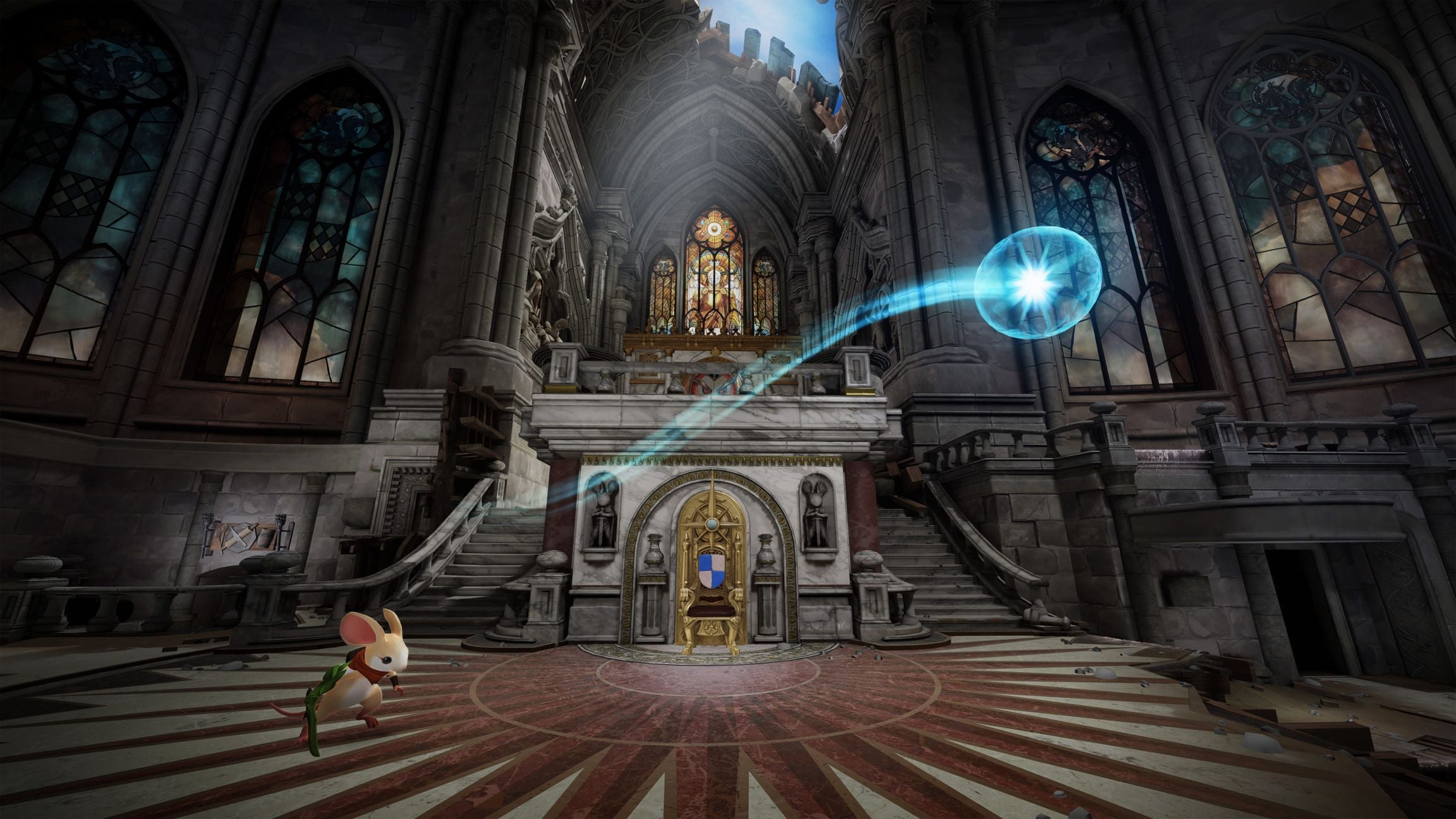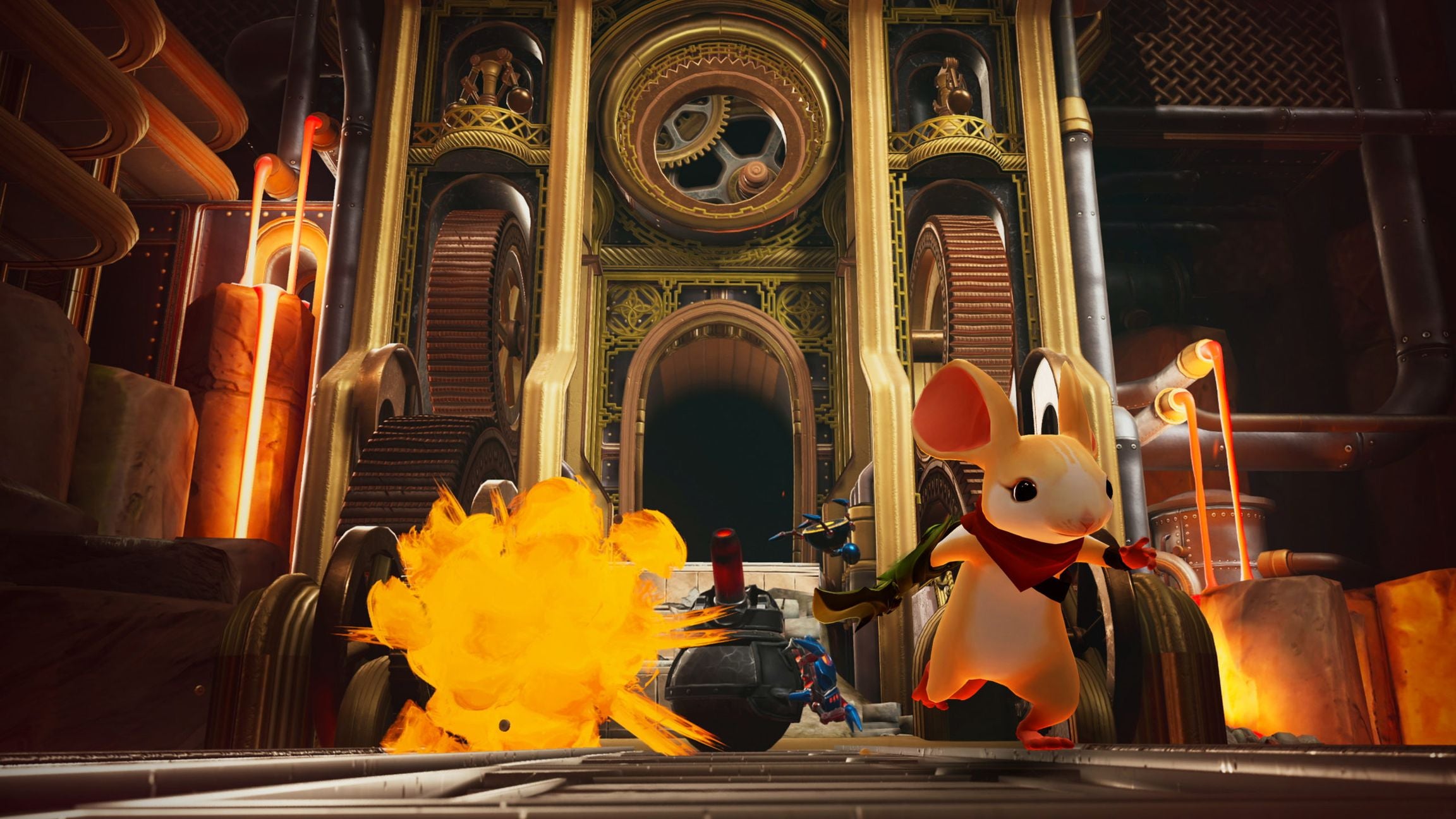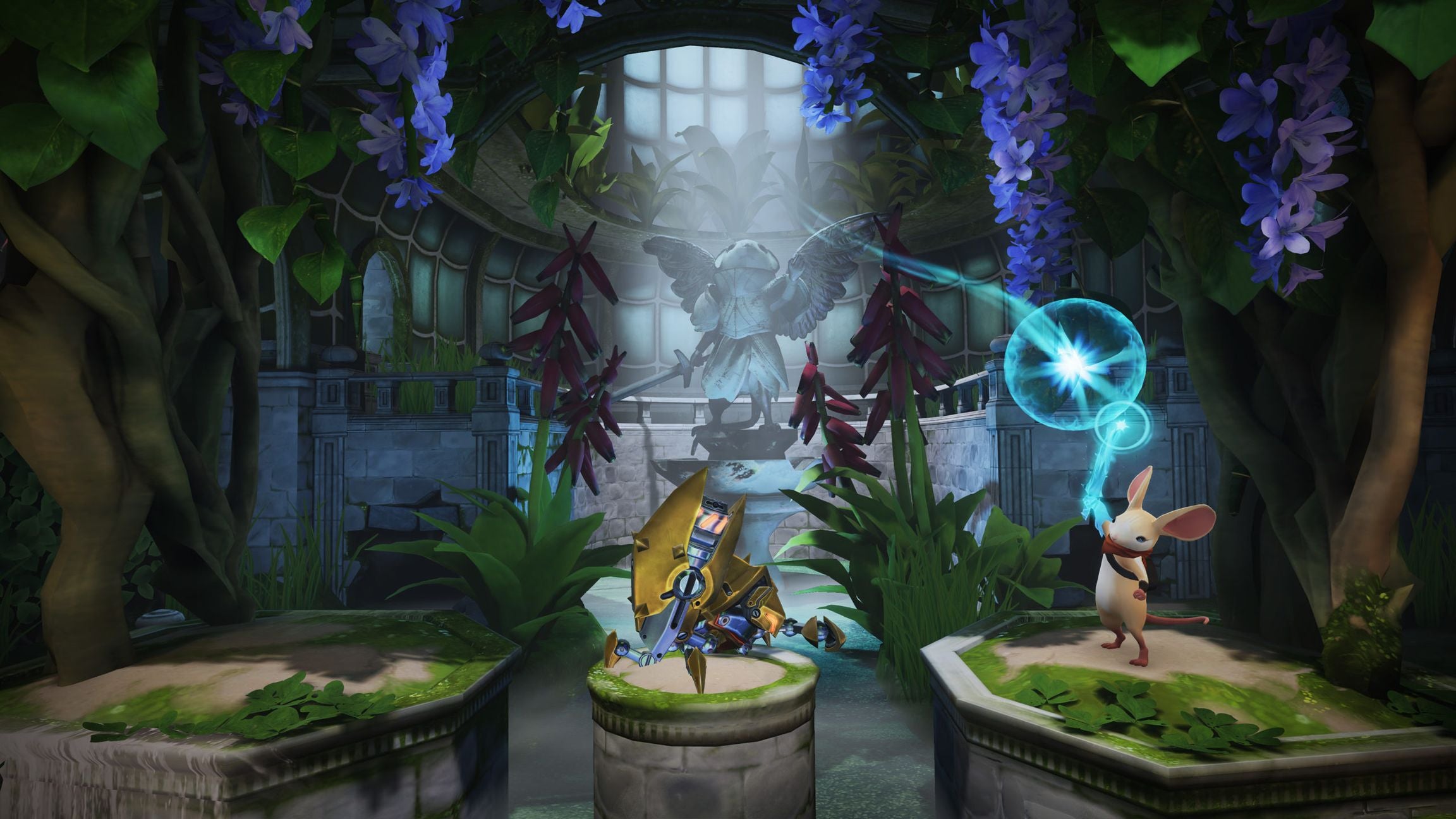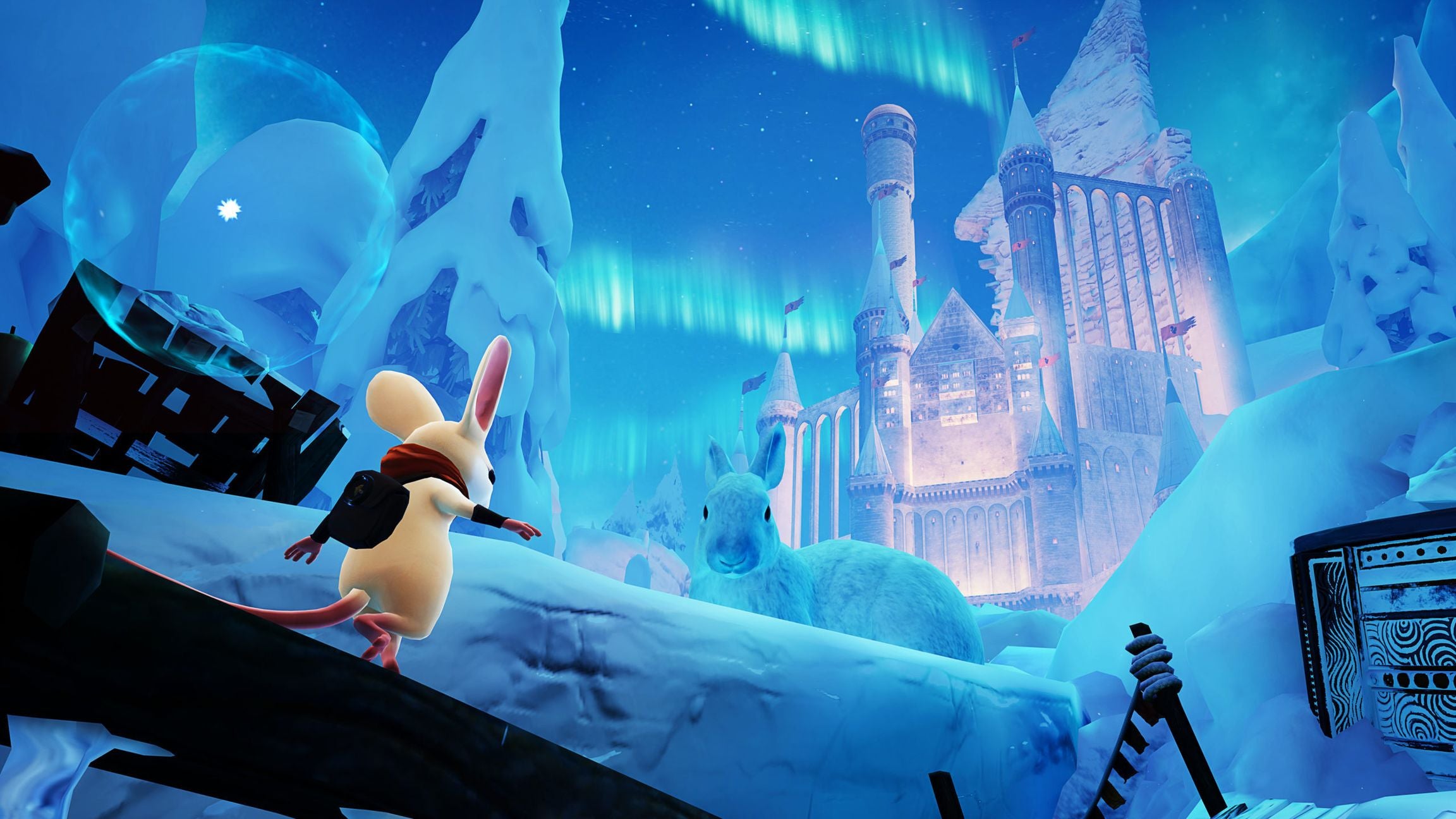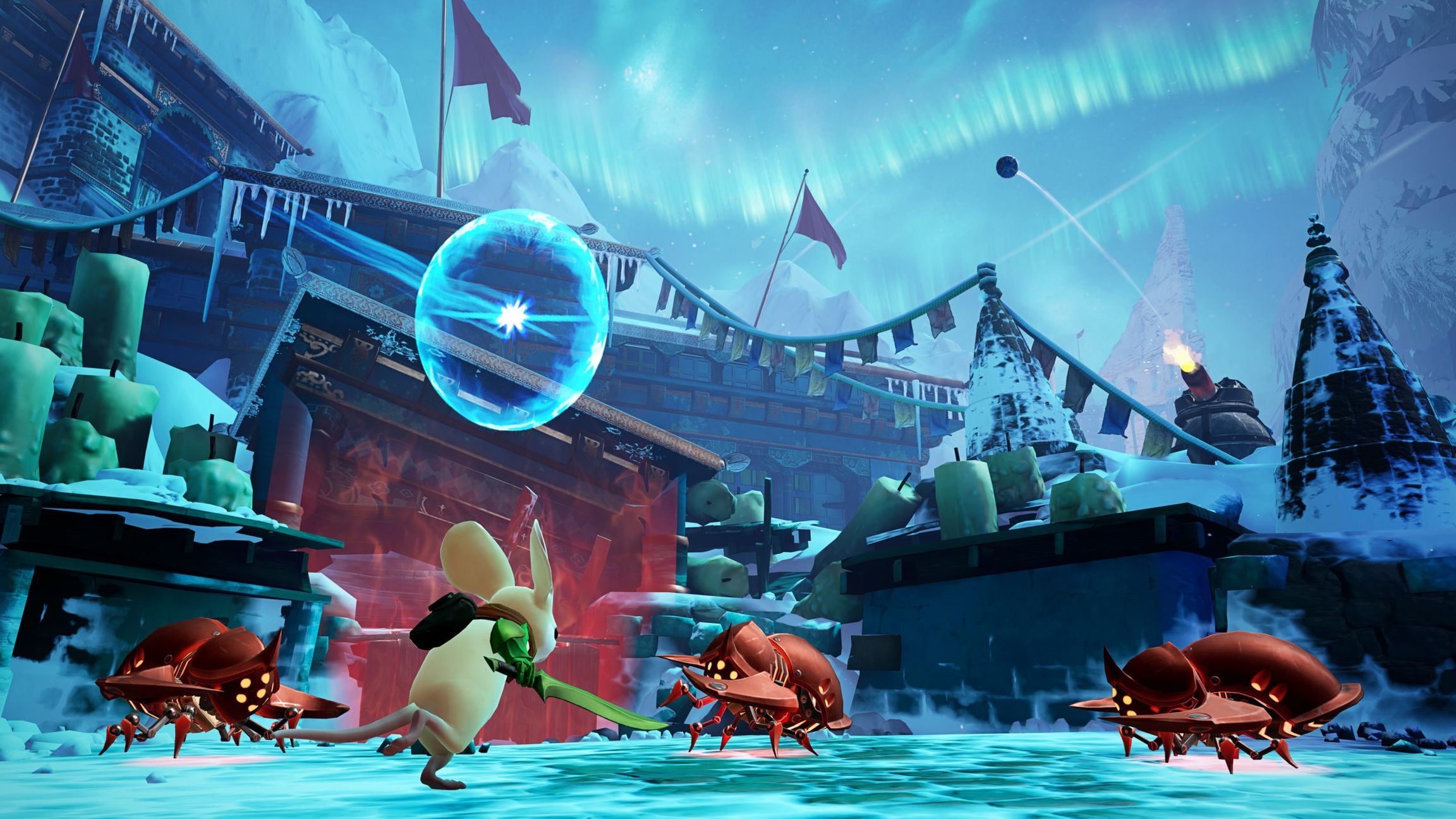Nowadays, the hustle and bustle of the PSVR storefront is long gone and decent new releases, hell, even bad to medium releases, are few and far between. Due to the minimal longevity of VR games in general and this drip-feeding of new experiences, it’s a safe bet to say that a lot of people’s PSVR headsets have been gathering dust for a while. I know mine certainly has. Chances are this drought of games is due to the impending release of the PSVR 2. With its new controllers and camera-free tracking promising a much better experience overall, it makes sense to think that developers would be prepping games to launch with that, rather than catering to a headset that’s about to become obsolete. And that’s why Moss: Book 2 feels like it launched with more of a squeak than the bang it deserves. It’s the sequel to one of my favourite VR games of all time - yet news of its arrival barely caused a ripple of excitement, even from within the VR sphere. After a brief recap from the narrator in the same cavernous library from the first game, the story picks up where the original left off. Quill, our heroic warrior mouse, is itching to continue her fight to free the land of Moss from the clutches of the evil Arcane and you, the Reader, are once again right by her side. This re-introduction to Quill serves not only as an excellent reminder of the attention to detail that was present throughout the original but also as a tantalising sign of what to expect in terms of presentation going forward. This first area is set in the confines of a crumbling castle courtyard. God rays shine through cracks in the ramparts, illuminating tiny dust motes that gently dance down towards the gigantic corpse of Quill’s adversary from the first game. The grey walls that surround you are littered with small features like jutting bricks and fine carvings, the paving slabs are covered in moss and weeds and they lay higgledy-piggledy on the floor as Quill appears from the shadows. It’s a lovingly constructed diorama that feels both lived in and alive and most importantly, believable. I’ve played so many VR games that just feel bare - where rooms are empty and textures are flat and the immersion is sucked out of the experience like oxygen out of a leaking space station. But here? Here everything just bursts with life and energy and when a virtual world is this meticulously designed, the real world is quickly forgotten and everything outside of your headset just melts away. This level of immersion carries on right through the game and, even though the adventure starts in very familiar settings, with Quill retreading old ground, it soon branches out into differently themed areas like snowy mountains and fiery mines. In the original Moss, each area felt like you were sitting beside - or inside - a tiny little model village and the same can be said for Book 2 at first. As you push further into the game however, these self contained dioramas are often replaced by what feels like little open-air stages, built atop gorgeous vistas that provide wide panoramas or stomach churning drops. The only downside here is that these views often draw your attention away from Quill, who is once again animated with the fluid flair of a big budget Pixar movie. She’s so lifelike in her movements and her expressive body language conveys a surprising amount of emotion. And talking of surprises, there are a couple of big story beats in here that were genuinely moving. The story from the original Moss was light on twists, but Book 2 throws out a couple of really interesting curveballs, too. In the end we’re left with a tantalising tease as to where the series could go next. Book 2 also seems to be heavier on the action compared to the original, with a higher emphasis on combat over puzzles. Those wonderfully tactile brain teasers where you need to reach into the levels and push and pull at objects are still present, as are the many collectibles that you’ll only find if you lean right in and peer into the level’s many nooks and crannies. The introduction of two new weapons means you’ll end up doing just as much fighting as you do thinking though, so it’s a bit of a shame that there’s only one new enemy type in the game. Along with Quill’s sword, she’s also able to wield a throwable glaive and a huge hammer that’s definitely the highlight of her new arsenal. Each weapon has its own special ability that not only helps with combat, but also plays into solving some of the game’s more complex puzzles too. The sword allows Quill to perform a dash attack that can help her reach out of the way areas, while the glaive can be attached to walls and then called back to Quill’s hand, Thor’s hammer style, in order to unlock doors. The hammer however allows you to use motion controls to take a far more active role in the combat than before, which is a step up from the first game where you basically took the role of Quill’s healer. My time with Book 2 wasn’t always a fairy-tale though. During my 7-8 hour playthrough, I encountered multiple bugs that ranged from the occasional and forgivable visual glitches through to an uncollectible collectible and, worst of all, a level where a series of disappearing platforms failed to respawn upon Quill’s unfortunate fall to her doom. Neither bugs could be fixed with checkpoint restarts and in the case of the latter, I could only solve that problem by fully replaying the entire level, long-winded puzzles and all. To Polyarc’s credit a developer did see my tweets whining about the bugs and, after I sent them the appropriate footage, they managed to reproduce them and patch them out. This should hopefully mean that any future playthroughs will be much more stable. After such a long time away from the PSVR, Moss: Book 2 also served as a reminder to me of the PSVR’s limitations. The sooner the PSVR 2 comes out and we can bin off the clumsy camera tracking, for instance, the better. While controlling Quill herself is perfectly fine due to the use of the dualshock 4’s thumbsticks and face button, the light bar tracking for the readers’ ball of energy is always at the mercy of the PSVR camera’s field of view. Lean in and move the controller too close to the edge of that vision cone and your energy ball will disappear off into the distance, until you bring the light bar back into view. Hold the controller directly in front of the camera and it risks blocking its view of your headset, which can cause the level around you to jitter and twitch. Aside from these flaws, the rest of Quill’s adventure is a perfectly comfortable introduction to the magic of virtual reality for people with limited experience. The way it plays with scale, light and colour delivers so many ‘wow’ moments, even for a seasoned helmet-head like myself. A later level especially has this wonderful, memorable moment where size comes into play in a magnificent but foreboding way, that casts a sudden sense of dread over proceedings. For the large part though, Book 2 is a sequel that plays it safe, and there were plenty of points at the beginning where I felt like I’d seen it all before, especially in regards to the enemies - but the emotional twists and the new gameplay mechanics introduced later on ensured I was left wanting more by the end. Moss: Book 2 is without a doubt a game that deserves to be played, especially if you fell in love with the original. Its staggering beauty is reason enough to dust off your PSVR for one last adventure before the PSVR 2 comes out, even if I wouldn’t blame you for holding out in the hope of a PC VR or Quest release - or some kind of bundle for the launch PSVR 2. Both Moss games are as short and sweet as their mousey protagonist, but I feel like Quill is worthy and capable of going on an even more epic adventure.

